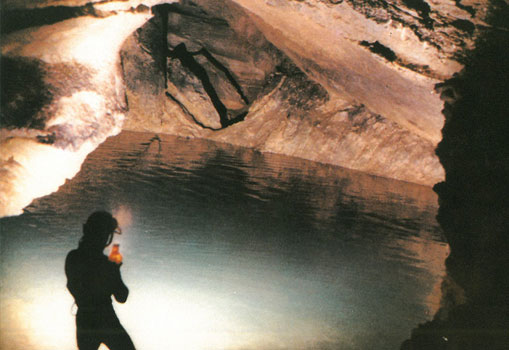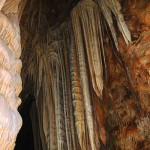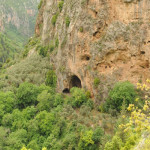Ashoush spring gushes forth in the very riverbed, at the foot of a rocky cliff overlooking the left bank of Nahr El Kalb river, some 300 meters downstream Jeita spring. Some 40 meters upstream Ashoush spring is a small cave of around 30 meters long ending with a small pond that acts as a spillway for the spring in wintertime.
In the sixties, cave divers from the Speleo Club du Liban (SCL) attempted to explore the spring only to find out that it is impenetrable. In 1978-79 cavers from SCL, diving in the small pond at the bottom of the cave, succeeded to cross the siphon reaching a large inner cave where they found the underground course of Ashoush spring gushing out of a second syphon. They also found, in an elevated gallery of this inner cave, fragments of pottery that were expertized later on (see below) as dating back to the Middle Bronze Age, which is an evidence that in those days the cave had another entrance, today obstructed.
In 1988, GERSL undertook a comprehensive study of the cave: Cave divers carried out the first systematic exploration and precise surveying of the cave, including under water exploration of the second syphon, which turned out to be obstructed at the depth of -22m.The geological study was also carried out; and the expertise of the pottery fragments performed by archaeologists.
On the other hand, Ashoush spring is the second main source of potable water for Beirut Water Authority who commissioned GERSL in 1994 to review and confirm the under water survey of the first siphon as part of a larger project of water catchment inside the inner cave,away from the river’s polluted waters.









